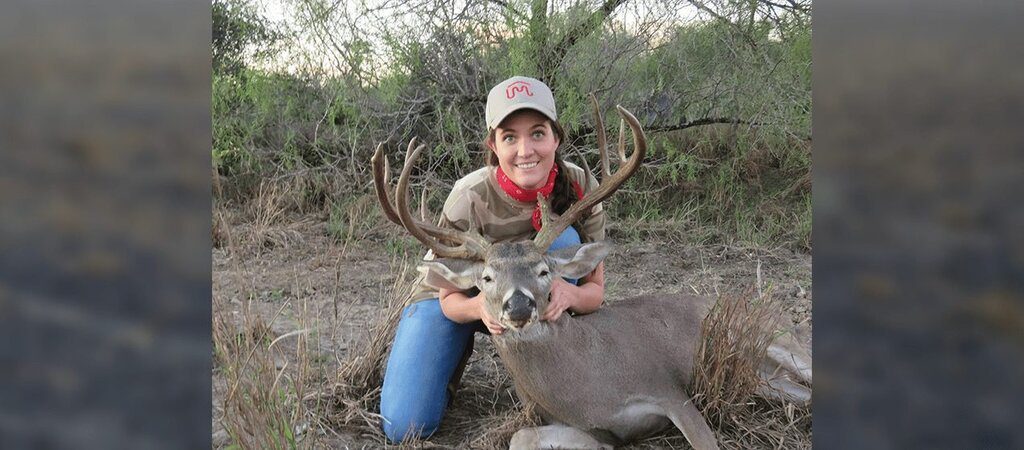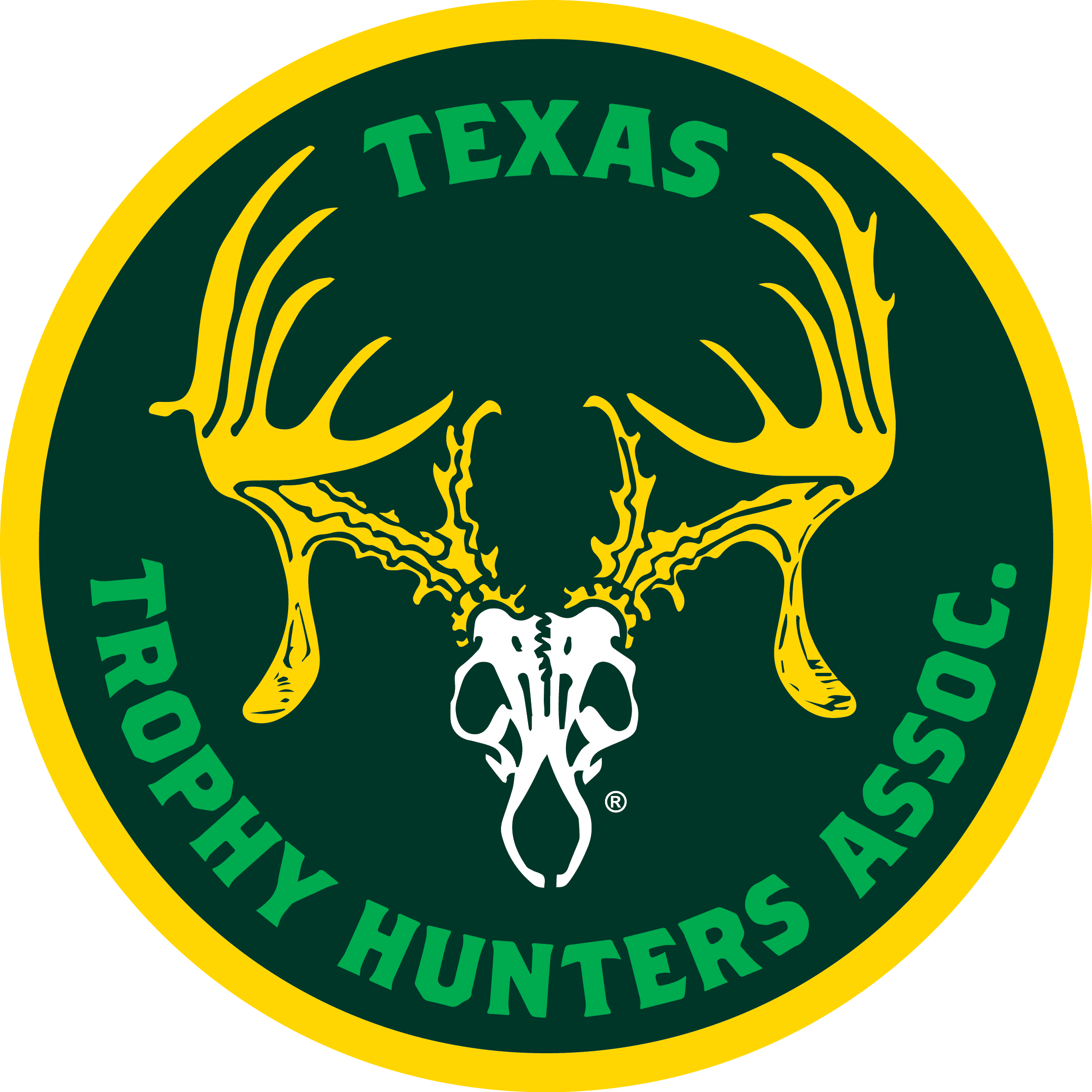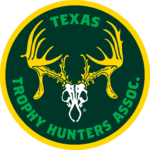
A lady hunter returns to hunting, takes big trophy buck
By Will Baird A map drawn from a survey commissioned in the first years of the 1900s hangs on a wall in the ranch headquarters. The framed work is large, 3×5 feet. At that time the ranch was large, nearly 125,000 acres of La Salle county. The surveyor carefully noted creeks, springs, meets and bounds, and other points of interest. Coming up from the south through Encinal and going north toward Cotulla lays a road. I imagine this trace was first traveled by ancient beasts such as North American camels and mammoths. Centuries later, Native American moccasins found their footing along the path, followed by Spaniards, Mexicans, and Texans. Commercial traders and freighters followed them. Decades ago modern men moved the north-south trade and travel route west some 10 miles, and named it I-35.
Old road gets a name
The old road became cross-fenced and privatized. What maintenance it receives comes from the owners of the various ranches the old trail courses through. We hunt deer on one of these ranches, a onetime pasture of the original vast tract. On this ranch the trail is called the Old Cotulla Road (OCR) and it’s traveled everyday by ranch hands, oil field workers, and for a few months each year, deer hunters. The folks who live and work on the ranch and drive the OCR become familiar with the whitetail deer living along its path. In November 2017, a buck appeared no one had seen—large and mature, about 6.5 years old, and cautious. He never stopped, quickly moving between mesquite and huisache mottes. The buck has a distinct white circle at the base of his nose and matching white circles frame his eyes. His antlers are unique, an impressive 11 points, with an additional long kicker arcing from the base of the right main beam. The elusive buck is rarely seen, but finally one of the ranch hands got a quick photo on his cell phone. We hunters studied the soft focus image.
Hunting the OCR buck
My stepdaughter, Annie Daugherty, one of our group, had asked for a chance to hunt the OCR Buck. Annie had been a hunter in her younger years, but became distracted by the demands of school and studies in fine arts. Now graduated from TCU and working, she is able to return to whitetail hunting. She went on a trip to Namibia two years ago, where she killed two species of plains game. It rekindled her interest in hunting. Time on the rifle range and bit of predator control on the ranch showed she was a steady and dependable shot. Furthermore, Annie has long expressed interest in killing a buck with a non-typical rack. My son Raleigh, Annie, and I discussed the best way to approach this challenge. The OCR Buck’s pattern was fairly dependable. He emerged from extremely heavy brush in the late afternoon. He worked his way into the prevailing southeast wind, interested in a group of does that came and went from the safety of the headquarters’ compound.
Making a plan
We chose a pick-up truck with a box blind mounted above the roof for the hunt. I would drive, and Raleigh would be the spotter on top along with Annie, who would hold the .30-06. On a cool afternoon the three of us loaded up. I drove into the sun for a mile away from the buck’s territory and then turned north before turning east, putting the sun at our backs. The truck crept at idle. We came to place I hoped would work. A long east-west sendero he would cross if he stayed true to his history. The set was perfect. We parked in the shade, with the sun at our backs and wind quartering into our faces. The engine was still warm when the buck stepped out. At 300 yards the binoculars confirmed what we could see. It was the OCR Buck and he was quickly walking in and out of the brush straight toward us.
First sighting
At about 200 yards he stopped and made a scrape—the only time he stood still. Would we let Annie take the shot or let the buck keep coming? He made the decision for us. Turning into the southeast wind, he quickly crossed the sendero and disappeared. For the first time in 10 minutes the three of us began breathing again. “I should have taken the shot,” sighed Annie. “Let’s stay. He may come back,” I said. “No, we re running out of daylight,” Raleigh said.
Hurry up and wait
I turned the key and began to slowly back up, covering in reverse the ground we had driven minutes before. When we came to an opening, I turned back to the south and took a heading I hoped would run parallel to the buck’s track. Then I backed into the shade of an ancient mesquite, and waited. This time there was no long sendero, just dense brush. I could see one opening about 50 yards in front of the truck. From up on top, Annie whispered she could see holes here and there in the motte. Unknown to me she had a clear view of the OCR trail, about a 500-yard distance. We were uncertain as to where the buck was, so all conversation between the box and the cab ceased. I had no idea what was happening. Later I would learn within minutes of our setting up the big buck came walking right down the OCR trail. The headquarters’ compound does captured his attention.
Buck makes a final move
Then he seemed to come to his senses, turned to the west and started walking directly toward the truck. Annie and Raleigh watched as he threaded his way toward them. He would disappear and reappear, lit by the glow of the fading light of the setting sun. A few minutes of good light remained. Still plenty of legal shooting time, but ethically, shooting late in heavy brush is a ranch rule violation. I was about to call it a miss and reached for the keys, still unaware he steadily moved toward us. I saw him for the first time when he materialized from the brush and into the little clearing past the hood of the truck. He turned broadside and took a few quick steps. Above me, the .30-06 roared. That evening Annie and Raleigh worked to skin the cape and ice down the venison. The buck’s teeth were worn smooth. He may have made it through the rigors of the rut and the coming three snows, maybe even the summer’s redundant days of 100 degree heat, or perhaps not. Instead of feeding coyotes, the OCR Buck is a memorial on Annie’s wall and fixed forever in our collective memories.


